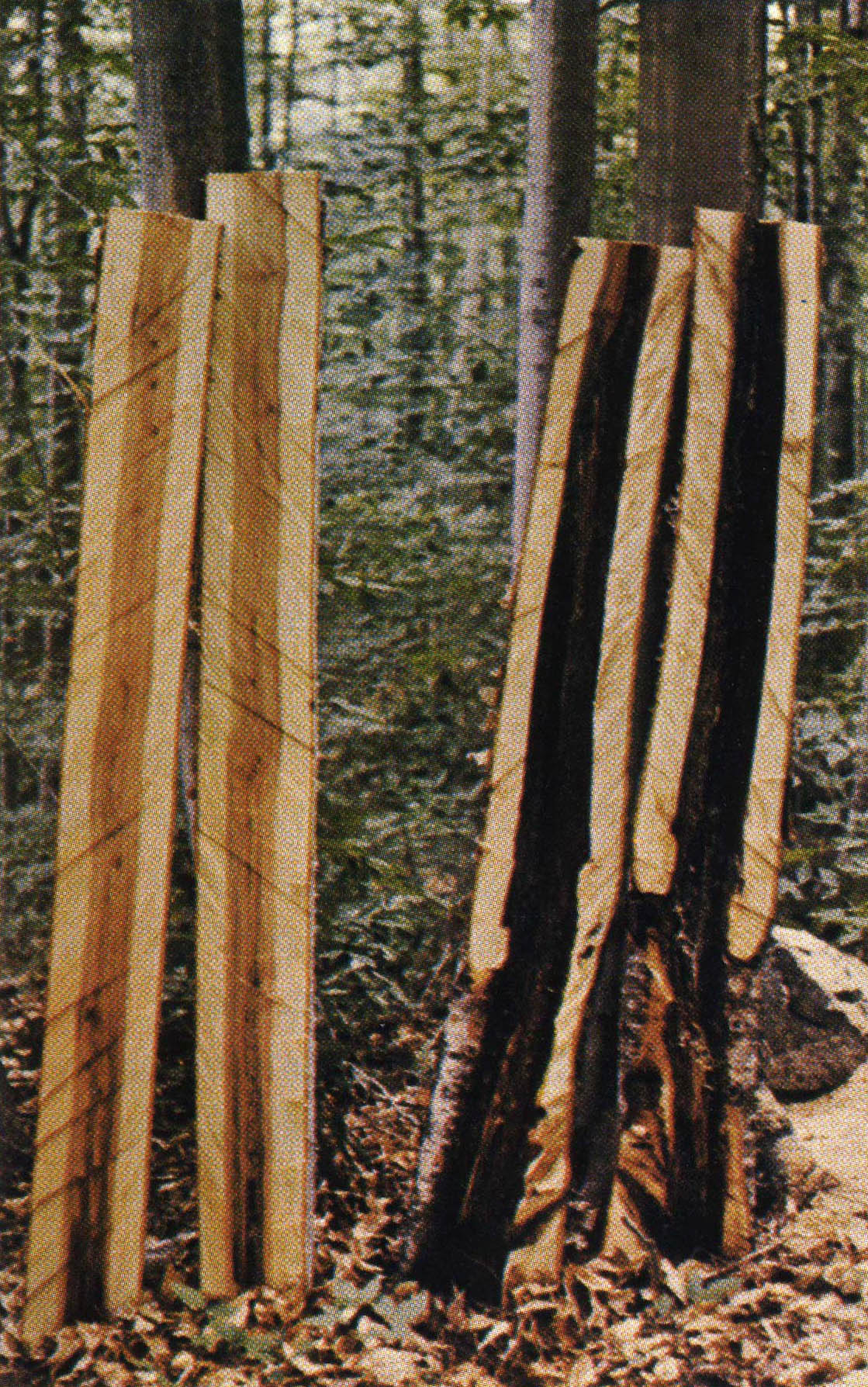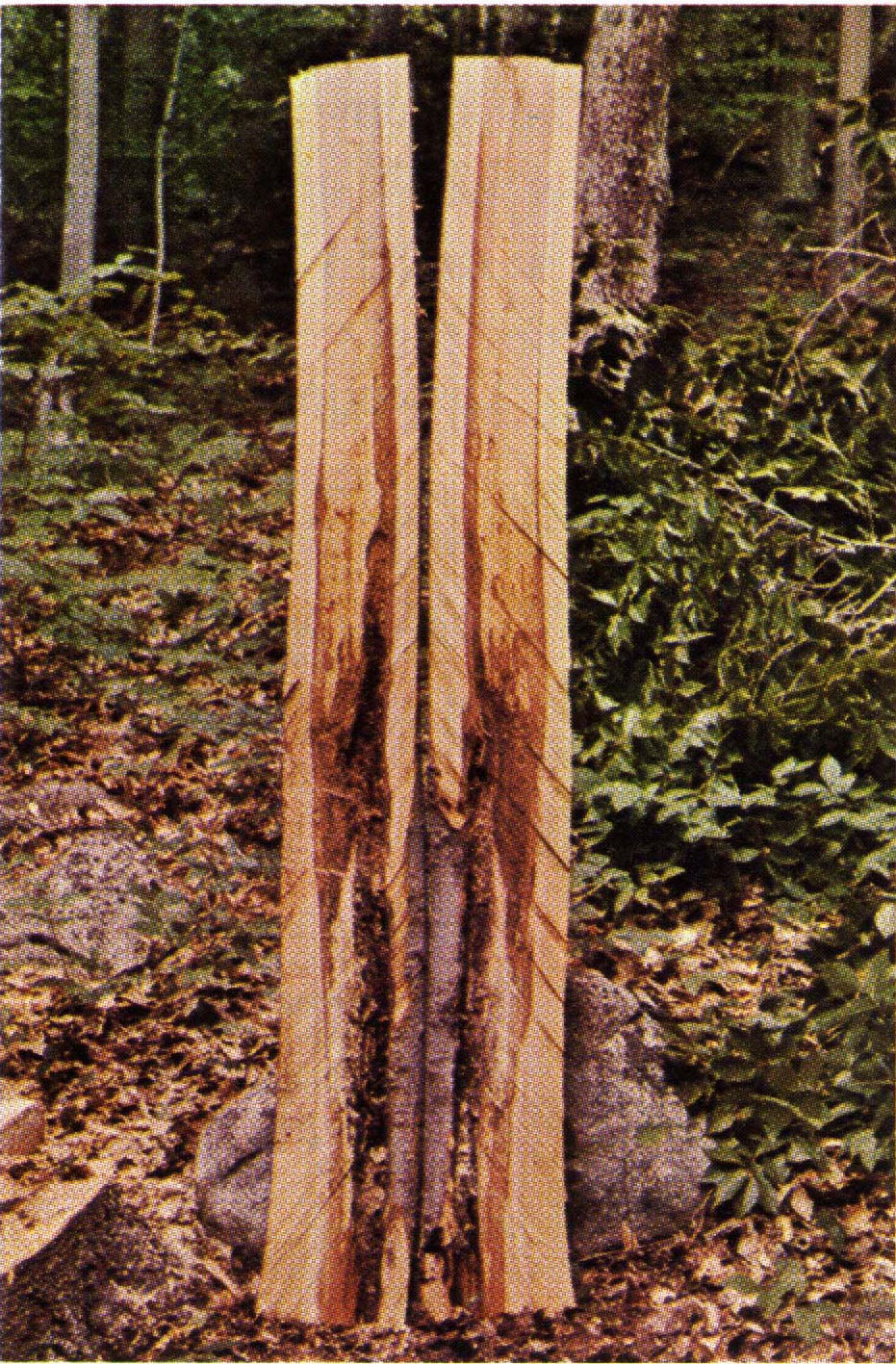
| Home |
| Tutorial |
| Photo Gallery |
| List of Defects |
| Links |
| Bark Distortion |
| Bird Peck |
| Bumps |
| Burls |
| Butt Scars |
| Butt Swells |
| Cankers |
| Conks |
| Epicormic Branches |
| Flanges |
| Flutes |
| Forks |
| Galls |
| Holes |
| Knots |
| Lesions |
| Limbs |
| Ring Shake |
| Rot |
| Seams |
| Soak |
| Splits |
| Wounds |
Significance: In a new wound, deterioration usually is not serious because any insect damage or stain will remain superficial until at least one full cycle of the four seasons is completed. Therefore, under most conditions for all classes of logs, new wounds are disregarded as log grade defects. However, caution must be exercised with species in which early deterioration does occur. Any degrading effect that develops must be evaluated.
The seriousness of an old wound varies considerably with location and species. In some species, exposed heartwood may heal completely before deterioration begins. Nevertheless, since old wounds are commonly associated with stain, decay, and insects, the affected area becomes a true log grade defect.
In veneer logs, new wounds are ignored where there are no signs of deterioration. New wounds showing deterioration and old wounds are veneer log grade defects and should be assessed according to standard defect specifications even though a scale deduction is made.
In factory logs, new wounds are disregarded where deterioration is not visible. New wounds showing deterioration and old wounds are log grade defects except in the few instances where they may be superficial. In factory logs, the area of deterioration stops at clear or sound cuttings, and it is a log grade defect even if a scale deduction is made.
In construction logs, new wounds and old wounds without associated rot are ignored. Rot associated with an old wound is a construction log grade defect except where it is only sap rot and superficial.
In standing trees, new and old wounds are examined and evaluated by methods discussed previously. Their relation to the different log classes and the products into which the logs will be converted is considered. In marking a timber stand, the decision to leave a tree with either a new or an old wound is based on a prediction of additional deterioration that will occur until the next cutting operation.




